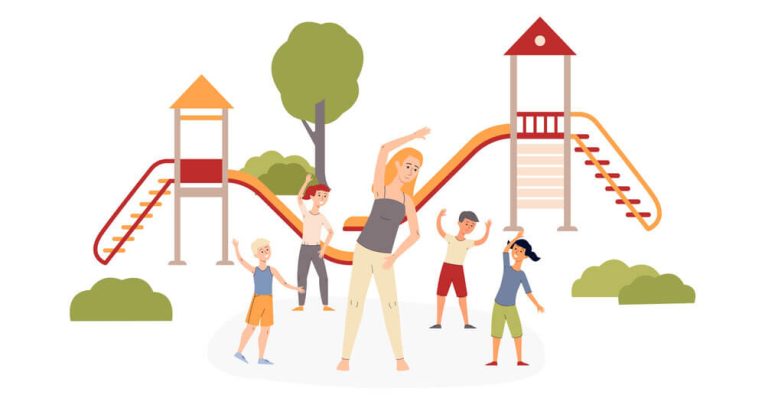Behaviour management strategies – how to develop teacher student relationships

Research shows these approaches are a great way to manage behaviour issues, says Nikki Cunningham-Smith…

“I know you won’t come down from the climbing frame for Mrs Cunningham-Smith, Tom, but I hear my twin Mrs Smith-Cunningham is in my office waiting for you.”
“The one who does everything backwards?”
“Yep.”
“The same one who drank her water upside down last time?”
“Same one.”
“What do you think she’s going to do today?” “I’m not sure, but I heard she was struggling to write the date on her whiteboard because it keeps coming out as a mirror image.”
Tom, climbing down from the frame: “OOOO I can read mirror images, my brother always writes rude words on the bus backwards so that people outside can read it, so I’m dead good at reading words backwards, shall I help her?”
“Sure why not…. we’ll talk about why those words aren’t great to use later shall we?”
“I’m not talking to you about anything.”
“Will you talk to Mrs Smith-Cunningham about it?”
“…Yeh…ok.”
The joy of a double barrel name right there, immediate alter ego. But this is a tale of Tom, a boy I had zero relationship with.
There had been so many negative incidents as I worked with him as the head of his school, and he only saw me as the person that turned up when things were going drastically wrong for him. He was in Y2 but had the savvy of a Y10.
I was at a total loss one day after having spent another afternoon trying to get him to follow my instructions and to stop disrupting the learning of others, that I decided the only thing I could do was somehow start again with him.
And that is how on that cold winter’s afternoon, my twin Mrs Smith-Cunningham was born.
She asked the questions that I, Mrs C-S, neglected to.
Mrs S-C knew that his favourite team was Liverpool; Mrs C-S didn’t.
Mrs S-C knew that he liked to pretend that his tea was hot chocolate, but that he didn’t really like chocolate; Mrs C-S didn’t.
Mrs S-C knew that his brother was the most important person to him in the world and if he wasn’t at school he’d be by his side; but Mrs C-S knew that his brother wasn’t the best role model so Tom couldn’t talk to her about him because she might tell Tom all the things his brother did were naughty. Mrs S-C wouldn’t do that – she liked to hear the stories of what they got up to, although sometimes she did say that she would have to tell Mrs C-S, but that was ok because Mrs S-C didn’t make a big deal about it.
I would meet Tom at my office, running ahead to put on the yellow jumper and changing my hair to the way Mrs S-C always wore it.
Teacher student relationships
Now, this is not me telling you that the best behaviour management strategy to employ is to split yourself in half (although that may be useful) and create a new character (although that may be desirable!).
I’m telling you that when considering the latest research in primary years regarding behaviour, there is one recurring theme that is continually shoehorning itself into the narrative.
Throughout many journals, think pieces and podcasts, no matter how it’s framed, in order to foster positive learning environments, we’re told the key is relationships.
You may be thinking that investment in pupil relationships is not new, and you’re right, but I will always shout from the rooftops that it’s at the heart of making a difference.
With all this being said, time is so precious within our spaces, the kind of example seen in Tom’s case isn’t always possible. (That was an intervention I could put in place as a non-teaching head of school.)
So where and how are you going to find the time to work on those teacher-student relationship (TSR) opportunities?
Applying the research
If we think of a child creating a barrier to a teacher delivering content, we are bound to see non-compliant classroom behaviours (NCCB). Unfortunately, students with non-compliant classroom behaviour are at risk of being socially excluded from their class. Recently, classmates’ attitudes have been identified as the central indicator of the social participation of pupils with non-compliant behaviour. (Loeper et al 2021).
In short, this means it’s more likely that these pupils are going to illicit attention in negative ways when they can’t build relationships with peers due to ‘bad’ behaviour.
This makes sense. If they can get a response from the teacher – and, ultimately, the attention they’re craving – by behaving badly, they are bound to enter a vicious cycle.
These habits are hard to break, because the positives of gaining attention outweigh the negatives.
So, what can we do about it?
Research has also shown that children engaging in moderate to vigorous physical activity (MVPA) benefit in positive behaviour outcomes once back in the classroom (Graham et al 2021).
However, the recommended time of 60 minutes is not always available within the curriculum, despite evidence supporting the benefits of regular breaks on physical, social, emotional, psychological and cognitive outcomes.
The research goes on to look at the benefits of using break time as part of this 60 minutes, and shows that the correct equipment and space, but – most interestingly – adult intervention, resulted in more vigorous play.
By using your break and lunchtime duties to become involved in pupils’ play, you are creating extra opportunities to exit that teacher persona and add some dimension and depth to your relationship.
Here are some quick break time ideas for you to develop your TSR and use MVPA with all of your pupils, but particularly with those who you may be struggling to find an ‘in’ with:
Learn a dance
The TikTok revolution means that a lot of our pupils are constantly moving and shaking through their days, so jump on the latest dance challenge with them.
Old-school games
Anyone for cat’s cradle? Can you create a bigger version with skipping ropes? Still got your pogs at the back of your parents’ garage? Give pupils an insight into what the playground looked like in your day, and in doing so remind the children that you once were just like them.
Embrace new skills
For example, find Double Dutch tutorials on YouTube, figure out how to get the kit (a nice letter written to the head should do the trick!) then learn together, and go through the trials, tribulation and elations together.
If all else fails…
There is a new show on TV that has some great Korean childhood games that you could teach your pupils. There may be some elements of it you might want to keep out of the playground, though…
Nikki Cunningham-Smith is an assistant headteacher and trained SENCo developing an outreach strategy to support the reduction of permanent exclusions in Gloucestershire. Read about behaviour management strategies for secondary.












